Ayurveda Body Types or Prakriti is one of the most fundamental and unique concepts of Ayurveda. It says that each human body is distinct.
What is prakrati?
जन्ममरणान्तरालभाविनी अविकारणी दोषास्थिति प्रकृतिः। Rasavaisheshka
The flawless dosha situation that rules the mind/body between the duration of birth and death is called prakrati.
The relative dominance of these dosha forms the prakrati. It is very similar to binary code, where two numbers form an entire program.
Read our popular article " Understand the Ayurvedic Nutrition Principles."
Ayurveda Body Types or Prakrati

Most of us know about the physical prakrati that emerges from physical dosha (vata, pitta, and kapha). But prakriti has a psychosomatic aspect.
The body has two layers of prakrati –
- Mental
- Physical
On the mental plane, prakrati or mind constitution is of 3 types –
- Satvik (Balanced),
- Rajasic (Hyperactive)
- Tamasic(Inactive).
On the physical plane, again we have three types of primary prakrati –
- Vata,
- Pitta,
- Kapha.
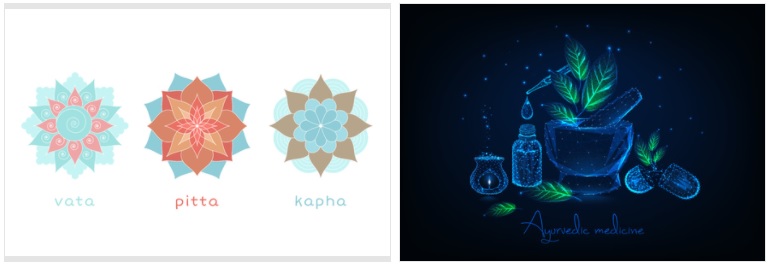
However, there is no strict correlation between mental and physical prakrati. A satvik person can have vata, pitta or kapha prakrati, and so on. And this law allows for the wide variety of people we have in our society.
Ayurveda says that the mind is the source of the body. Body emerged from the mind like the reflection on a mirror. Therefore, our bodies can be as different as our minds are! And the dosha on the mental plane affects the dosha on the physical plane.
Let’s focus on the physical prakrati in this blog.
How is physical prakrati formed?
शुक्रशोणितसंयोगे यो भवेद् दोष उत्कटः ।
प्रकृतिर्जायते तेन ….।। Sushrut Samhita – Sharir sthan 4:63
Whichever dosha is predominantly active during the union of the sperm and the egg cell, forms the body type or the prakrati of the baby.
Therefore, if vata dosha is dominant during the conception, the baby will have a vata dominant prakrati and vice versa.
Types of physical prakrati
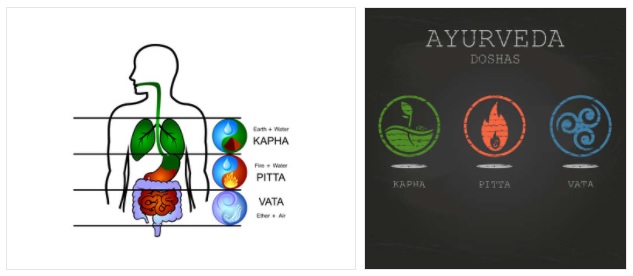
As mentioned earlier, there are three basic types of prakrati –
- vata,
- pitta,
- kapha
Read our popular article " 3 Ayurvedic Dosha or Tridosha – Vata, Pitta, and Kapha"
In future blogs, we will cover the characteristics of each prakrati in detail.
But these primary prakrati are further divided into dual and triple dosha prakrati. For example – vata pitta – in this subtype vata is the dominant force and pitta is the subdominant dosha.
In triple prakrati analysis, the situation of all the three doshas is considered, for example – vata pitta kapha or pitta vata kapha. Here, the first dosha is the dominant force that guides the metabolism, sub-dosha governs some functions and recessive dosha is rarely expressed in full bloom.
So, we can imagine the first dosha to be the general manager, the sub-dosha to be the assistant manager, and the recessive dosha to be the secretary to the assistant manager. Accordingly, they exert their influence in decisions making.
Importance of Ayurveda Body Types or Prakrati
This relative dominance decides the metabolic activity, its rate, and efficiency in an individual. As the binary code is the base for any computer program; prakrati is the base for everything that happens inside the body or to the body.
Prakrati decides your appearance, your digestion, your skin, hair, and even your thinking capacity, memory, and emotions! Here are some defining effects of prakrati on the body –
Distinct External Features
Each prakrati offers distinct physical characteristics to the individual. For example –
Physical form –
- vata people are generally thin;
- pitta people are athletic, and
- kapha dominant individuals may have bulky bodies.
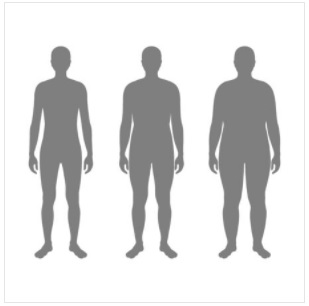
Skin –
- vata people have dry skin prone to itching and flakiness.
- pitta people may have reddish, oily skin prone acne, wrinkles, spots, etc.
- kapha people may have bright, smooth, and clear skin, however, they are prone to experience numbness or tingling sensation.
Hair –
- vata people may have dry and frizzy hair prone to hair fall.
- pitta people have curly hair prone to early whitening.
- kapha people have thick, and strong hair. They face the least of hair problems.
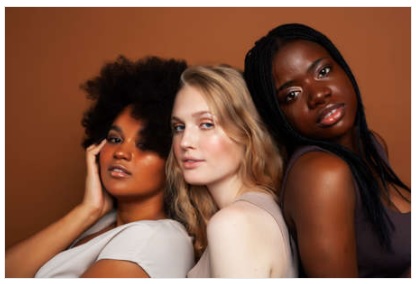
There are multiple other features regarding the skin, hair, limbs, eyes, and the entire body that reflect the signature of the dominant dosha.
Distinct Metabolic Features
All the metabolic functions are tuned to the prakrati of the individual, for example
Digestion –
- vata people have a random and delicate digestive capacity, which means that sometimes they may have good hunger, and sometimes no hunger.
- pitta people have a rapid rate of digestion.
- kapha people have prolonged and sluggish digestion.
Psychosomatic link
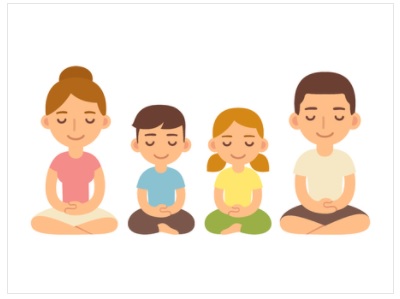
Prakrati also indicates some of the mental qualities. For example –
Memory
- vata people have sharp recent memory but weak remote memory.
- Pitta people have average, and
- kapha people have a very strong distant memory.
Intelligence
- Vata people are quick to learn and forget!
- Pitta people have a particularly sharp grasping power.
- Kapha people have excellent retention.
Genetic Link
As mentioned earlier, the prakrati is like the code of the body. It is akin to the DNA but two DNAs also can be similar. Therefore, prakrati is beyond the genetic code, it is the selective expression of genetic material.
For example, if you have genes of curly and straight hair and a pitta prakrati, the pitta prakrati may promote the expression of curly hair over straight hair.
Application of Ayurveda Body Types Or Prakrati

Foundation for Ayurvedic Diet and Lifestyle
Dosha balance is the key to perfect health and Prakrati (dosha dominance) is the base to decide the most compatible food and lifestyle for an individual.
Prakrati compatible diet
For example, a kapha prakrati person would have sluggish digestion. For example, a kapha person should have warm, light, and dryish food to balance the cold, heavy, and moist kapha dosha.
Prakrati compatible lifestyle
At the same time, a kapha prakrati person should avoid excessive exposure to cold weather, should exercise compulsorily, and avoid sleeping during the day time. Therefore, an ideal lifestyle for an individual also should match her prakrati.
Disease susceptibility
The dominant dosha also predetermines the susceptibility to specific diseases.
For example
- A vata person is more prone to joint-related disorders, whereas a
- Pitta person has more possibility to contact skin or blood-related disorders. Kapha dominant people gain weight very easily but might find it difficult to lose.
Base for Preventive Ayurveda
Since the prakrati of any person is a great and flawless indication of the most probable disorders, we can direct our preventive efforts towards those specific disorders.
For example, a vata person is prone to joint disorders or digestive disorders. Therefore, she should have regular meals, avoid skipping meals, etc. to keep her digestion in place. She may prioritize intake of joint supplements or practice joint exercise.
Foundation of Ayurveda Body Types Treatment

Ayurved considers both mental and physical prakrati for treatment. However, their importance varies according to the patient and disorder.
For example, for the treatment of mania (unmada), mental Prakriti is the prime focus.
But for a metabolic disorder like diabetes, an Ayurveda physician should focus on physical prakrati. The state of mind is an important factor in all diseases. But the treatment focus changes according to the primary plane of the disease.
Disease Classification and Prakrati
Most of the disorders are classified on the basis of dosha, for example, vata based indigestion, pitta based indigestion, or kapha based indigestion. Normally, vata people are prone to vataj disorders, and so on.
Therefore, the treatment of indigestion may have three different approaches depending on the prakrati of the patient. For example –
Treatment of vata disorders focuses on the intake of warm, oily, and heavy food and vata relieving herbs like ajwain (carom seeds), black cardamom, etc. However, it might be radically different for pitta and kapha dominant indigestion.
Conclusion
So, prakrati is the basis of body metabolism, health, and disease treatment in Ayurveda.
If you are an Ayurveda enthusiast, make sure that you know your prakrati before implementing any Ayurvedic diet, lifestyle, or treatment!

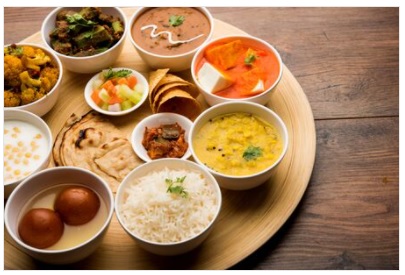
1 comment
[…] Read our popular article " What is Ayurveda Body Types or Prakrati : Know Thyself" […]
Comments are closed.